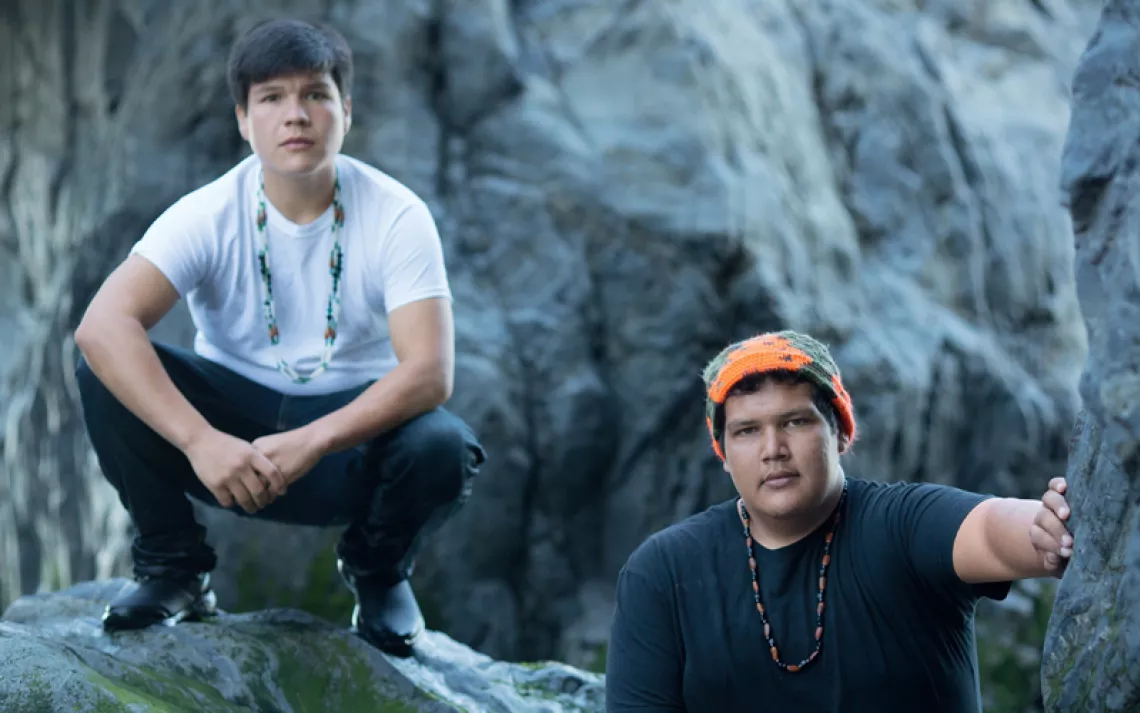Two Yurok Brothers, Four Dams, and a Lot of Salmon
Sammy and Jon Luke Gensaw want salmon fishing to be sustainable again

Sammy and Jon Luke Gensaw, Yurok tribe members who look out for the Klamath River's salmon. | Photo by Leon Villagomez
Sammy Gensaw was 14 and hiking a trail behind the local community college in Eureka, California, when a woman walked up to him and invited him to a meeting. The year was 2008, and an unprecedented alliance between the Klamath River tribes and farmers, fishermen, and environmentalists had resulted in a plan to remove four of seven dams on the river beginning in 2020. The meeting was about making sure it actually happened.
Gensaw had grown up in a fishing family. He often heard stories about how before the dams, a hundred years ago, the spring salmon run was so thick with fish that a person could walk across it. "I grew up on the same mountain ranges that my grandfather did and that his grandfather did," Gensaw says. "I'll never leave this community. That's why I had to make it better."
Soon, Gensaw was a student-coalition community organizer for Undam the Klamath, throwing bake sales so he could travel to the 2009 Berkshire Hathaway shareholders meeting in Omaha, Nebraska, and educate attendees about the damage their investment in the dams was doing.
When he was 17, Gensaw and his 14-year-old brother, Jon Luke, began teaching local kids how to catch and smoke salmon using traditional Yurok methods. They called the project the Ancestral Guard, and their goal is to make sustainable fishing second nature by the time the dams come down in 2020. Because the brothers teach everyone, not just tribal members, the project doesn't qualify for certain tribal funds, but they're continuing the work. "If these kids grew up on our ancestral territory, then they are my people," Gensaw says. "If you're getting healthy and your neighbor's sick, that's not healthy."
The dam removals, which once seemed so far in the future, will take place soon. Now the brothers are involved in another fight, against a plan to run a liquid natural gas pipeline under the Klamath. "Our people have always fought for the right to fish," Gensaw says. "The industrial revolution is over. It's the restorative revolution now."
This article appeared in the September/October 2017 edition with the headline "Brother Act."
FLOWING AT LAST When the four privately owned hydroelectric dams on the Klamath are removed starting in 2020, it will be the largest river restoration in U.S. history.
 The Magazine of The Sierra Club
The Magazine of The Sierra Club



